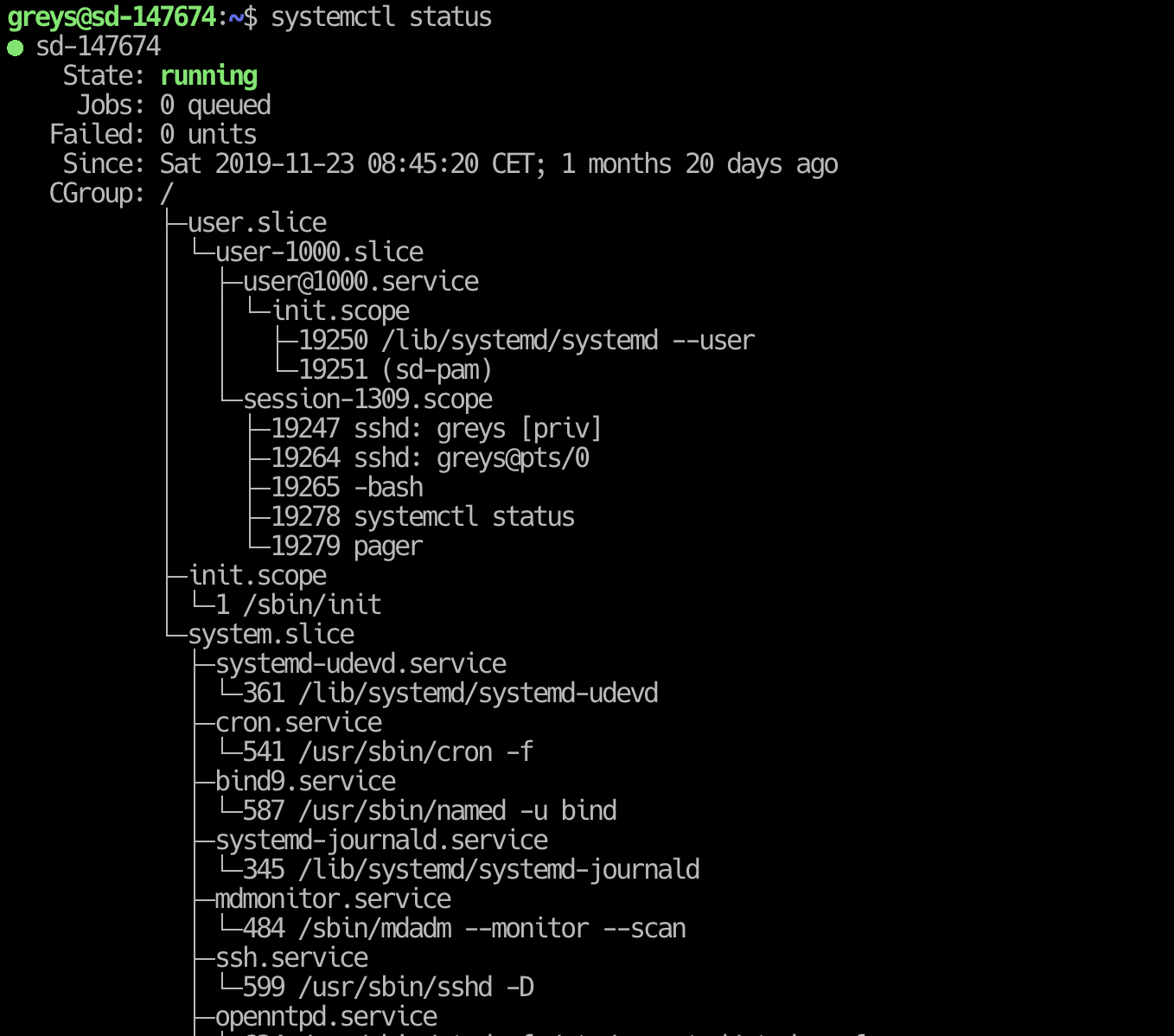Systemd Services Status

 Example of systemctl status
Example of systemctl status
I’ve just learned by accident that it’s possible to run systemctl status without specifying a name of systemd service – this way you get the listing and status of all the services available in a neat tree structure.
SystemD services
As you may remember, startup services are no longer managed by /etc/init.d scripts in Linux. Instead systemd services are created – this is handy for both managing services and confirming their status (journalctl is great for showing latest status messages like error log).
Show systemd Services Status with systemctl
Run without any parameters, systemctl status command will show you a tree structure like this:
greys@sd-147674:~$ systemctl status
● sd-147674
State: running
Jobs: 0 queued
Failed: 0 units
Since: Sat 2019-11-23 08:45:20 CET; 1 months 20 days ago
CGroup: /
├─user.slice
│ └─user-1000.slice
│ ├─[email protected]
│ │ └─init.scope
│ │ ├─19250 /lib/systemd/systemd --user
│ │ └─19251 (sd-pam)
│ └─session-1309.scope
│ ├─19247 sshd: greys [priv]
│ ├─19264 sshd: greys@pts/0
│ ├─19265 -bash
│ ├─19278 systemctl status
│ └─19279 pager
├─init.scope
│ └─1 /sbin/init
└─system.slice
├─systemd-udevd.service
│ └─361 /lib/systemd/systemd-udevd
├─cron.service
│ └─541 /usr/sbin/cron -f
├─bind9.service
│ └─587 /usr/sbin/named -u bind
├─systemd-journald.service
│ └─345 /lib/systemd/systemd-journald
├─mdmonitor.service
│ └─484 /sbin/mdadm --monitor --scan
├─ssh.service
│ └─599 /usr/sbin/sshd -D
├─openntpd.service
│ ├─634 /usr/sbin/ntpd -f /etc/openntpd/ntpd.conf
│ ├─635 ntpd: ntp engine
│ └─637 ntpd: dns engine
├─rsyslog.service
│ └─542 /usr/sbin/rsyslogd -n -iNONE
...In this output, you can see systemd service names like cron.server or ssh.service and then under them is the process name and numerical process ID that indicate the how each service is provided.
INTERESTING: Note how openNTPd.service is provided by 3 separate processes: ntpd and two other ntpd processes (NTP engine and DNS engine).






